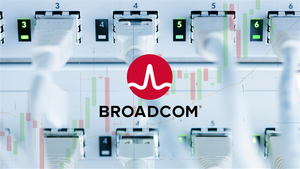
The American dream of homeownership has become an increasingly distant reality for millions, as a perfect storm of persistent inflation and soaring interest rates has sent the cost of buying and maintaining a home to unprecedented levels since 2020. This dramatic surge has not only strained household budgets but has also fundamentally reshaped the dynamics of the housing market, locking out a generation of potential buyers and creating a domino effect across the broader economy. The immediate implications are clear: reduced affordability, slowed market activity, and a growing divide between those who own homes and those aspiring to.
This affordability crisis, compounded by potential new tariffs on crucial construction materials, threatens to further exacerbate an already challenging environment. For everyday Americans, it means a higher barrier to entry into the housing market, larger monthly expenses, and a re-evaluation of long-term financial goals. For public companies and the broader financial markets, it signals a period of significant recalibration, favoring sectors resilient to inflation and high capital costs while posing severe headwinds for those reliant on consumer discretionary spending and affordable borrowing.
What Happened and Why It Matters
Since the beginning of 2020, the landscape of homeownership in the United States has undergone a seismic shift. Data from Bankrate reveals that the average annual "hidden expenses" of homeownership—encompassing property taxes, homeowners insurance, maintenance, energy, internet, and cable bills—have surged by a staggering 26%, climbing from approximately $14,428 annually in 2020 to $18,118 in 2024, with projections indicating a further rise to $21,400 in 2025. This increase is just one facet of the affordability crisis, demonstrating that the cost of simply owning a home has become a substantial burden.
Beyond these recurring costs, the median home price has appreciated by a significant 38% since 2020, reaching nearly $437,942. The U.S. home price index stands 47% higher than in early 2020, with the Case-Shiller Home Price Index reporting a 53.5% rise from January 2020 to September 2024. These figures are fueled by persistent inflation, which has driven up the cost of labor, materials, and services across the board. The cumulative inflation rate from April 2020 to April 2025 stands at 25%, directly impacting everything from home maintenance ($8,808 annually) to property taxes (up 27% from 2019 to 2024) and homeowners insurance (soaring by nearly 40% since 2019 and 57% from 2019 to 2024). This widespread inflation means that every aspect of homeownership is becoming more expensive, eroding the purchasing power of consumers.
Compounding the inflation-driven price hikes are the significantly higher interest rates orchestrated by the Federal Reserve (FRB) to combat inflation. The 30-year fixed mortgage rate, which bottomed out at 2.65% in January 2021, soared to a peak of 7.79% in October 2023 and currently hovers around 6.2% as of September 2024. This dramatic increase has a profound impact on monthly payments. A $200,000 mortgage at 6.8% now costs $1,320 per month, a 64% increase from the $806 payment at 2.65% in 2021. When factoring in both rising home prices and interest rates, the monthly payment on a median-priced home with a 5% down payment skyrocketed by an astounding 113% from 2021 to 2023, pushing homeownership out of reach for a vast segment of the population.
This dual assault of inflation and high interest rates has pushed homeownership affordability to historic lows. To comfortably afford a home today, a household now requires an annual income estimated at $116,986. The typical homebuyer is allocating 45% more of their income to mortgage payments than in 2019, while the median home price now stands at approximately five times the median household income, far exceeding the traditional affordability benchmark of three times income. This has resulted in a severe "lock-in" effect, where existing homeowners with historically low mortgage rates are reluctant to sell, thereby constricting housing supply (down 34.3% from pre-pandemic levels) and further fueling price increases despite sluggish sales activity, which has fallen to a 30-year low. This market stagnation, coupled with an escalating cost burden, significantly limits opportunities for first-time buyers and creates a structural challenge for the broader economy.
Shifting Fortunes: Who Wins and Who Loses in the Affordability Crunch
The turbulent economic currents characterized by soaring homeownership costs, persistent inflation, and elevated interest rates have created a distinct bifurcation of fortunes across various public companies and sectors. While some industries are struggling to stay afloat, others are finding unexpected tailwinds.
The banking sector stands out as a potential winner in this environment. Larger financial institutions, such as JPMorgan Chase (NYSE: JPM), often see their net interest margins (NIMs)—the difference between interest earned on loans and interest paid on deposits—expand as interest rates climb. This allows them to reprice their assets (loans) more quickly than their liabilities (deposits), leading to enhanced profitability and potentially stronger stock performance. While short-term challenges like reduced fixed-income asset values exist, the overall long-term outlook for well-capitalized banks can be positive. Similarly, the energy sector, with giants like ExxonMobil (NYSE: XOM) and Chevron (NYSE: CVX), tends to thrive during inflationary periods. As the cost of crude oil and other energy sources rises, these companies possess the pricing power to pass on higher expenses to consumers, maintaining or even increasing their profit margins due to relatively inelastic demand. The materials sector, encompassing mining firms for copper, metals, and rare earths, also benefits as raw material costs and product prices appreciate, allowing companies with strong pricing power to pass these increases onto customers.
Perhaps the most direct beneficiaries of the homeownership affordability crisis are rental markets and the property owners within them. As homebuying becomes increasingly unattainable, demand for rental properties surges, empowering landlords, especially those with multifamily units, to raise rents. Real estate investment trusts (REITs) focused on robust rental portfolios, particularly in multifamily and industrial segments, can act as an effective inflation hedge, as property values and rental incomes tend to rise. Landlords with shorter lease terms are particularly well-positioned to adjust rents to current market conditions. Furthermore, companies across various sectors that offer essential services or possess strong pricing power are better equipped to navigate high inflation, as they can pass on increased costs without significant demand loss, protecting their profit margins. Examples include certain healthcare providers and professional services firms, as well as travel and leisure companies such like Delta Air Lines (NYSE: DAL) and Marriott International (NASDAQ: MAR), which have seen robust demand allowing them to maintain elevated prices.
Conversely, the real estate sector as a whole, especially commercial REITs and developers, faces significant headwinds. Higher interest rates dramatically increase the cost of debt for property acquisitions, development projects, and refinancing, squeezing developer margins and reducing the attractiveness of new investments. This leads to decreased property values and dampened investment activity. The construction sector is also heavily impacted, grappling with soaring material costs (lumber, steel, concrete, oriented strand board), fuel expenses, and labor shortages, which inflate project costs by over 50%. Elevated interest rates make construction loans more expensive, severely impacting the financial viability of projects and potentially leading to delays, reductions in scope, or even insolvencies for companies operating on fixed-price contracts. Homebuilders, such as D.R. Horton (NYSE: DHI), are particularly vulnerable in this high-rate environment due to suppressed demand for new residential construction.
The retail sector, particularly businesses focused on discretionary items, suffers considerably. High inflation eroding consumer purchasing power, while rising interest rates increase the cost of credit, leaving consumers with less disposable income for non-essential goods. This results in reduced sales, inventory build-ups, and pressure on profit margins. Companies in consumer discretionary segments, like major car manufacturers such as Volkswagen (ETR: VOW3), Tesla (NASDAQ: TSLA), Toyota (NYSE: TM), and General Motors (NYSE: GM), often see demand for new vehicles slow during such periods. Finally, highly leveraged companies across all sectors are vulnerable, as rising interest rates escalate their debt service expenses, cutting into profits and limiting their ability to invest or manage existing obligations. This can constrain growth and lead to significant setbacks for firms unable to adapt their capital structures.
Systemic Ripples: Industry Impact and Broader Implications
The current economic climate, defined by dramatically increased homeownership costs, persistent inflation, and elevated interest rates, is sending profound ripple effects throughout the broader economy, deeply integrating into wider trends, and evoking historical parallels. This confluence of factors creates a complex web of challenges that extend far beyond the immediate housing market.
The real estate and construction sectors bear the brunt of this impact. The surge in mortgage rates—more than doubling since early 2021—combined with escalating home prices, has severely impaired housing market activity and buyer enthusiasm. This leads to a significant reduction in demand and a "lock-in effect," where homeowners with historically lower mortgage rates are hesitant to sell, further constricting housing supply. This stagnation extends beyond residential sales, affecting commercial real estate, particularly office and retail properties, as high borrowing costs and uncertain demand reshape asset fundamentals. The construction industry faces a double whammy: increased borrowing costs for financing new projects and rising material prices, exacerbated by supply chain issues. This leads to project delays, fewer new homes being built, and potential job losses, creating inefficient labor markets where high housing costs prevent workers from relocating to areas with better employment opportunities.
The financial services sector also experiences significant shifts. While higher interest rates can bolster net interest margins for banks, they concurrently elevate the risk of borrower defaults as debt-servicing costs rise for both households and businesses. The interconnectedness of the housing market and the financial system evokes chilling parallels to the 2008 financial crisis, where a housing market collapse triggered widespread financial distress. Moreover, elevated interest rates increase the cost of capital for businesses across all sectors, impacting investment returns and making future funding more challenging. This extends to consumer spending and retail, where eroded purchasing power from inflation and increased debt servicing costs leave consumers with less discretionary income. This directly impacts retailers, the automotive industry, and other consumer goods sectors, forcing cutbacks on non-essential purchases and leading to slower sales and potential business contraction. Individuals are also dipping into savings more, delaying essential home repairs, and increasing reliance on credit cards, further straining personal finances.
Beyond these immediate sectors, the crisis amplifies wealth inequality. Existing homeowners often see their equity grow, while non-homeowners, particularly lower and middle-income households, find homeownership increasingly out of reach, widening the gap and limiting a crucial avenue for long-term wealth building. This confluence of factors also poses a significant risk to overall economic growth, increasing the likelihood of a recession as businesses scale back investments and lay off workers, and reduced consumer spending further slows the economy. The current environment also exhibits characteristics of "stagflationary pressures"—persistent inflation alongside slowing growth—a challenging dilemma for central banks balancing inflation control with economic growth and employment goals. The labor market is also affected, as high housing costs hinder worker mobility, preventing them from relocating to areas with better job prospects and reducing overall labor market efficiency.
Regulatory responses are multifaceted. Central banks, like the Federal Reserve (FRB), primarily combat inflation by raising interest rates to cool demand, though this risks slowing economic growth. Governments, at state and local levels, are increasingly focusing on fiscal policies and housing supply initiatives. This includes efforts to streamline development through deregulation and zoning reform, as seen in Florida’s Live Local Act and California’s legislative push for affordable housing. Financial incentives for builders and programs like the Low-Income Housing Tax Credit (LIHTC) aim to boost affordable housing supply, while the conversion of commercial properties to residential units is also being explored.
Historically, the current situation draws strong parallels to the 1970s and early 1980s stagflationary period. That era, marked by high inflation, rising interest rates (with mortgage rates peaking at an unprecedented 16.64% in 1981), and economic challenges, saw a dramatic decline in home affordability and sales. While nominal home prices may not be falling sharply today due to an acute housing supply shortage, the "lock-in effect" and real (inflation-adjusted) declines in home values are recurring themes. Unlike the 2000s housing boom, driven by loose lending, the current crisis is rooted more in supply shortages, yet the potential for a negative wealth effect on consumer spending and systemic financial instability remains a relevant concern.
Navigating the Road Ahead: What Comes Next
The path forward for the housing market, inflation, and interest rates promises a continued period of adaptation for both businesses and consumers, with the looming specter of tariffs potentially exacerbating already challenging conditions. Navigating this complex landscape will require strategic pivots and a keen eye on evolving economic indicators.
In the short-term (2025-2027), the housing market is expected to remain constrained by significant affordability challenges. Home price growth is projected to decelerate but stay positive, likely in the 3-5% range annually, with median prices reaching approximately $410,700 in 2025 and $420,000 in 2026. Inventory, while slowly increasing, will likely remain below pre-pandemic levels, maintaining upward pressure on prices. The "lock-in effect" will continue to limit supply, perpetuating a tight market. The rental market, consequently, will likely remain robust due to homeownership affordability issues, though rent growth might stabilize in some areas with increased multi-family unit inventory. Inflation is forecast to decline steadily globally, but J.P. Morgan projects global core inflation to increase to 3.4% (annualized rate) in the latter half of 2025, largely due to tariff-related spikes in the U.S. Interest rates are expected to remain elevated, with mortgage rates generally ranging between 6.5% and 7.5% for much of this period, as the Federal Reserve gradually lowers the federal funds rate towards 3.5%-4.0% by the end of 2025, aiming for a more neutral stance while carefully monitoring inflation.
Looking to the long-term (beyond 2027), home price growth is anticipated to normalize, aligning more closely with historical averages of 3-5% annually, a healthier and more sustainable pace. Demographic shifts, particularly Millennials and Gen Z entering the market, will continue to fuel demand. Mortgage rates could potentially dip to a more manageable range of 5.5% to 6.0% between 2028 and 2029, with the federal funds rate normalizing to 2.5%-3%, assuming favorable inflation trends and economic stabilization. However, persistent inflation or an economic slowdown could alter this trajectory, underscoring the ongoing need for vigilance and adaptability.
A critical factor that could further exacerbate these trends is the implementation or continuation of tariffs. Tariffs on essential building materials such as lumber, steel, aluminum, gypsum, glass, and plastic components significantly raise construction and renovation costs. The National Association of Home Builders (NAHB) estimates that building materials were already 34% more expensive in December 2020, and tariffs could add an estimated $10,900 to the cost of a typical new home. This directly translates into higher home prices, further reducing affordability and making it even more challenging for first-time homebuyers. Higher costs due to tariffs can also render some new developments financially unfeasible, worsening the ongoing housing shortage. Tariffs contribute to cost-push inflation, which is then passed on to consumers, eroding purchasing power and potentially causing the Federal Reserve to maintain higher interest rates for longer to combat this persistent inflation. This can also lead to supply chain disruptions, economic uncertainty, and broader economic slowdowns, as businesses postpone investments and consumers delay spending.
To navigate this evolving landscape, businesses will need to make strategic pivots. Diversifying supply chains to reduce reliance on specific countries and investing in domestic production can mitigate tariff impacts. Focused cost management, efficiency improvements, and exploring new construction technologies and alternative materials will be crucial. Active engagement with policymakers to advocate for favorable trade terms or exemptions for critical materials is also essential. Consumers will need to prioritize financial prudence, increasing savings for larger down payments, improving credit scores, and reducing debt to secure better mortgage rates. Considering diverse housing options, including smaller homes or those in more affordable suburban or rural areas, exploring first-time homebuyer programs, and budgeting for rising "hidden costs" of ownership (taxes, insurance, maintenance) will be vital. A long-term perspective on homeownership as a wealth-building strategy, rather than expecting quick gains, will also be important.
Emerging market opportunities will largely be found in affordable secondary markets in regions like the Midwest and certain suburban/rural areas, which show stronger appreciation due to relative affordability and shifts in demand. The rental market will remain a strong investment opportunity, and despite challenges, new construction in undersupplied areas, particularly for smaller, more affordable units, may still present opportunities. Conversely, the overarching challenges will be the exacerbation of the affordability crisis, persistent supply shortages, economic uncertainty, and interest rate volatility, all potentially amplified by tariff policies.
The Enduring Challenge: A Concluding Outlook
The dramatic increase in homeownership costs since 2020, fueled by a relentless combination of inflation and elevated interest rates, represents a watershed moment for the American housing market and the broader economy. This complex interplay of economic forces has created a formidable barrier to entry for millions, fundamentally altering the trajectory of wealth accumulation and market dynamics. The added layer of tariffs on essential building materials promises to be a significant accelerant, pushing costs even higher and embedding inflationary pressures more deeply.
Moving forward, the housing market will likely experience a continued period of adjustment. While some moderation in home price growth and a gradual increase in inventory offer glimmers of hope, the underlying challenges of affordability will persist. The "lock-in effect" is slowly loosening, potentially freeing up more supply, but the cumulative rise in home prices, property taxes, and insurance premiums over the past five years means that even with slightly lower mortgage rates, many buyers will still face substantial financial hurdles. This enduring challenge has profound significance, potentially widening the wealth gap and necessitating a fundamental recalibration of housing policy and innovative solutions to address the supply-demand imbalance.
For investors, the coming months will demand astute observation of several critical indicators. Federal Reserve policy and statements on interest rate adjustments will be paramount, as sustained rate cuts could stimulate demand, while any hawkish shifts due to persistent inflation could reverse positive sentiment. Key inflation data, particularly CPI and PCE reports, should be watched closely, especially for signs of "tariff pass-through" to goods prices that could keep costs elevated. Labor market reports will offer clues as to the Fed's urgency for rate cuts. Furthermore, an increase in housing inventory and sustained construction starts will signal progress in addressing supply shortages, while any new tariff developments will directly influence construction costs and, by extension, new home prices. By carefully monitoring these interconnected factors, investors can better navigate the dynamic housing market, identify opportunities, and mitigate risks in this era of unprecedented homeownership costs.





